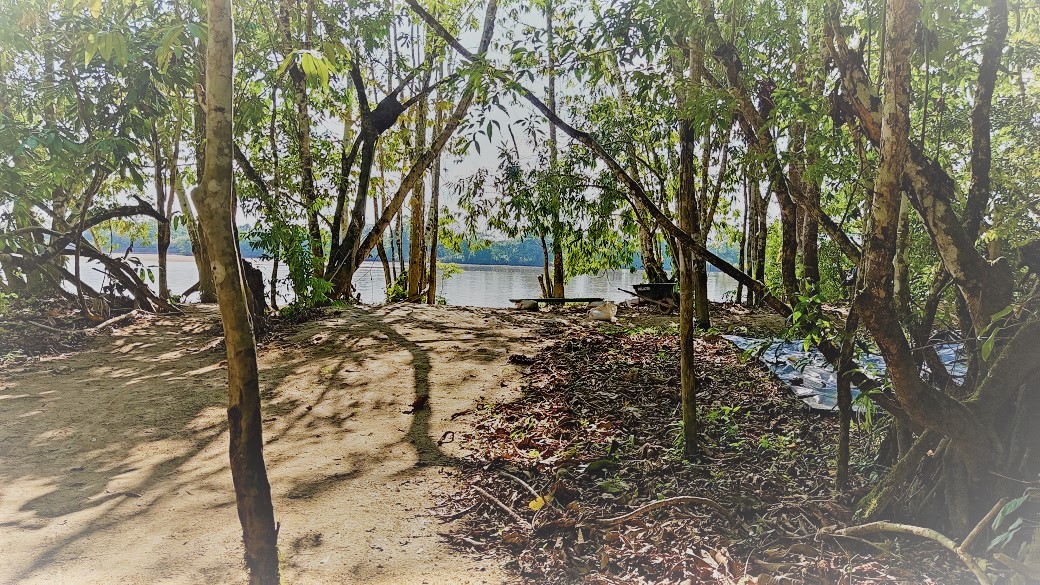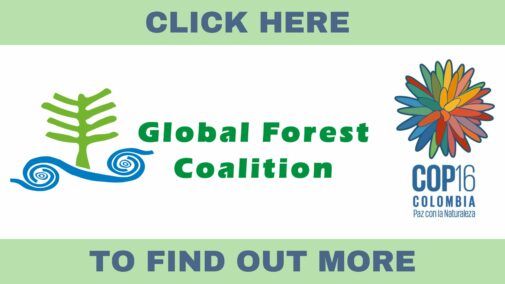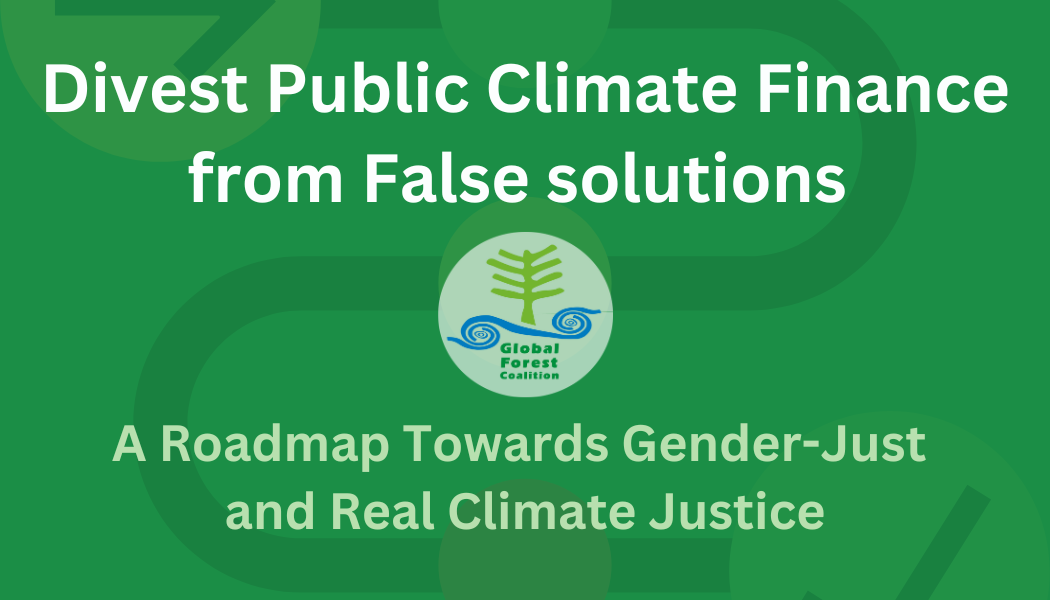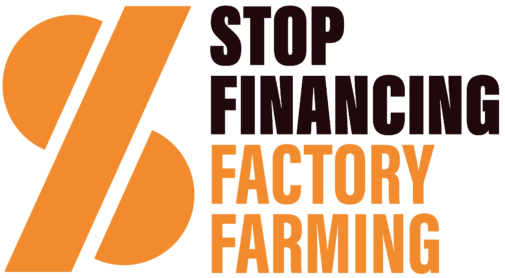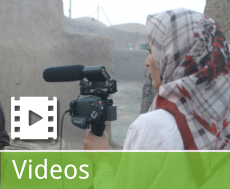Climate Finance, Results-based Payments and Conservation by Indigenous Peoples and Local Communities
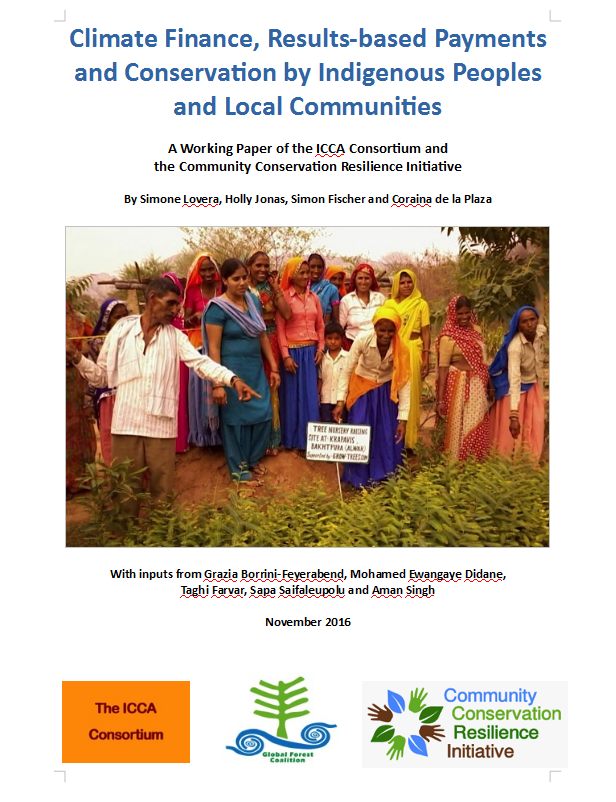
A Working Paper of the ICCA Consortium and the Community Conservation Resilience Initiative
By Simone Lovera, Holly Jonas, Simon Fischer and Coraina de la Plaza
Climate change is one of the most significant contemporary threats to indigenous peoples, local communities and women therein. Climate change and climate-induced natural disasters have significant implications for the connectivity and healthy functioning of ecosystems and biodiversity upon which they depend and thus also for their water, food and resource sovereignty and cultural and spiritual practices.
On the other hand, conservation and restoration initiatives by indigenous peoples, local communities and women not only contribute to enhanced climate resilience of countries and communities, but also contribute significantly to mitigating climate change. A growing body of literature confirms a strong correlation between the level of legal recognition of indigenous peoples’ and community forest rights and their abilities to prevent deforestation, maintain forest health and connectivity, and lower carbon dioxide emissions.[1] Conversely, where communities have no or weak legal rights, their forests are vulnerable to deforestation and carbon dioxide emissions. Even when communities have legal rights to their forests, government actions that undermine those rights can lead to deforestation and high carbon dioxide emissions, though communities can sometimes partly overcome such challenges through collective action.[2]
More broadly, addressing the drivers of ecosystem degradation does not require a huge financial investment. Instead, it requires a redirection of the financial flows that currently support and enable such degradation, including industrial bioenergy projects, large-scale livestock production and other unsustainable industries. Aichi Target 3 of the Strategic Plan for Biodiversity 2011-2020 of the Convention on Biological Diversity (CBD) gives a clear mandate to eliminate or reform perverse incentives that lead to ecosystem degradation before 2020 and to establish positive incentives for biodiversity conservation.
There is growing consensus that appropriate recognition of and support for indigenous peoples’ and community conserved territories and areas (ICCAs) and other community conservation initiatives is one of the most effective and equitable non-market-based approaches to motivate women and men to conserve and restore forests and other ecosystems. Key factors in the success of such initiatives include strong community leadership, agency, capacity, effective participation of women, traditional knowledge and practices, and confidence to advocate for themselves.
However, due to the inherently complex relationships between soils, ecosystems and the atmosphere, it is impossible to accurately account for the positive or negative impact of certain community conservation and restoration practices on the climate. These initiatives should be appropriately recognised and supported and comprehensively reported on, including within the global climate regime – but they cannot be ‘accounted’ for. In light of these inherent methodological complications, land use related emission reductions should not be used to offset emissions from energy or other sectors, as this would fatally undermine an already weak climate regime.
In addition, indigenous peoples, local communities and women face prejudices in mainstream climate change policies. They do not benefit sufficiently from mainstream climate finance due to the growing trend to merge public climate finance with private sector investments, as the latter need to be commercially profitable. In contrast, ICCAs and other forms of community conservation tend to provide a broad range of social, cultural, ecological and livelihood benefits, but only modest financial profits. As a result, current climate finance mechanisms provide perverse incentives for climate investors to invest in monoculture tree plantations and other commercially attractive projects, despite their negative impacts on biodiversity, the climate and the livelihoods of the world’s most vulnerable peoples and communities.
The impacts of climate change as well as the burdens of inappropriate climate mitigation and adaptation policies introduce new and exacerbate existing social, economic and political inequalities. Climate policy- and decision-making should be based on human rights, clear legal standards, and recognition of the rights and roles of indigenous peoples, local communities and women in ecosystem-based climate resilience and mitigation.
This working paper is primarily directed towards climate policymakers. Following this introduction, it examines climate policy developments since the adoption of the Paris Agreement and their impacts on indigenous peoples and local communities (Section 2). It considers the treatment of loss and damage in the Paris Agreement and implications of climate change – and the failure to deal with loss and damage – for indigenous peoples and local communities (Section 3).
After illustrating the increasing role of the land use sector in climate policy (Section 4), the working paper discusses the risks and pitfalls of current climate and land use policy, with particular emphasis on market-based mechanisms and results-based payments (Section 5), and describes practical experiences of indigenous peoples and local communities with climate finance (Section 6). It then highlights the roles of ICCAs and other community conservation initiatives as non-market-based approaches to climate change mitigation and resilience (Section 7). Finally, it discusses the broader trends and implications of these issues (Section 8) and sets out recommendations for policymakers (Section 9).

